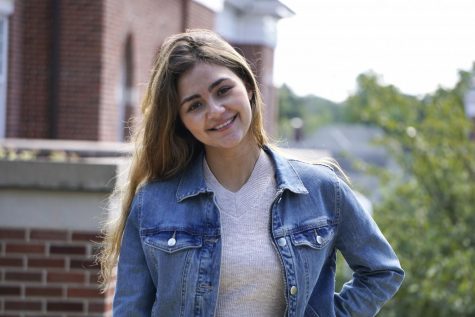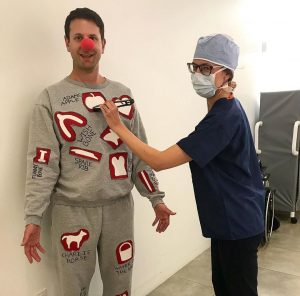Plastic themes art exhibit promotes green attitude
February 1, 2020
The Iona College Council on the Arts hosted the gallery exhibition, “Plastic Paradise,” featuring the work of artist Elena Kalman on Jan. 27 in the Brother Kenneth Chapman Art Gallery.
“Plastic Paradise” is an art installation that depicts nature and is made entirely of plastics including tarps, drop cloths and garbage bags. It includes a river made from blue and white plastic sheets, trees made from black garbage bags and tall pillars made with colorful plastics.
Kalman highlighted how she collected the plastics used in this piece at construction sites. As an architect who witnesses this firsthand, Kalman explained how plastics are carelessly disposed of at building sites.
“If you think about how people are not recycling in their homes, even bigger problems are present at all the industries,” Kalman said. “In the construction sites and the big buildings they cover floors with blue plastics before they paint the walls and hang white plastics in finished buildings…none of it is usually recycled, all of it remains.”
This inspiration for this piece comes from the pollution caused by the disposal of plastics as well as the proliferation of plastics and the impact this rapid increase has had on the earth, according to Kalman.
“This is about a world where humans are trying to create a better environment and a better life for everybody, and as a part of it plastics came as a super material in the 20th century that promised a lot of wonderful things,” Kalman said.
Kalman included other vibrant plastic pieces in colors such as green, yellow, blue, orange and red to provide a contrast to the black trees. She explained how these bright plastics were apart of another project she worked on called The Wave project.
“It’s a continuous, ongoing project we take from different places,” Kalman said. “It’s about water and the importance of water. I’m recycling a part of my previous work.”
In addition to the plastics used in this piece, small baby dolls are placed in the river and in plastic tubes. According to Kalman, the dolls not only represent the artificial world that helped produce plastics, but the new generation that will be dealing with the damage plastic has done to the earth.
Although Kalman offered an explanation as to what many of the components of “Plastic Paradise” signify, she emphasized that she wants the piece to be left to interpretation and have people create their own meanings.
“If there is no explanation to it you should still be able to enjoy it,” Kalman said. “Explanation is not as important as the visual impact.”
The Brother Kenneth Chapman Gallery hosts various gallery exhibitions every year that explore various topics and ideas. Visit their website for more information.



